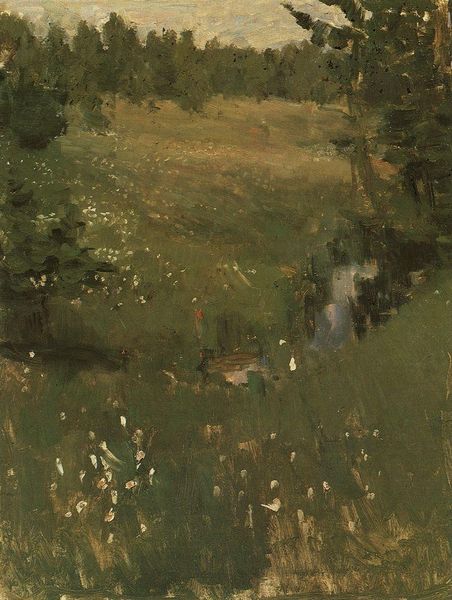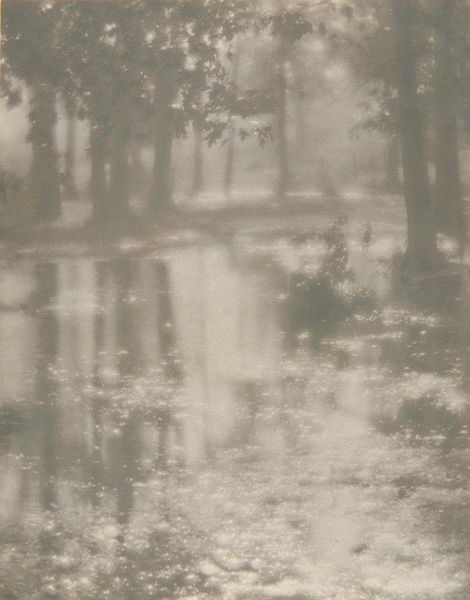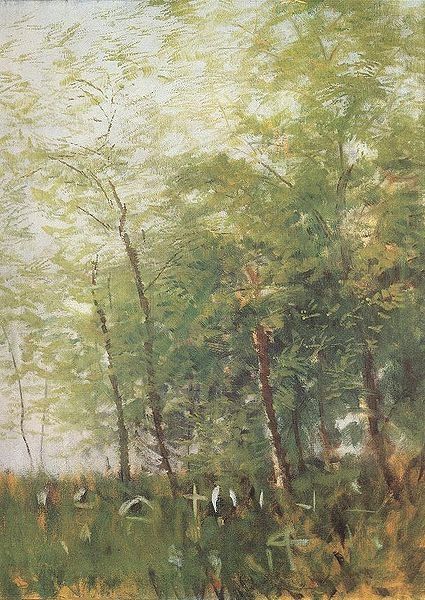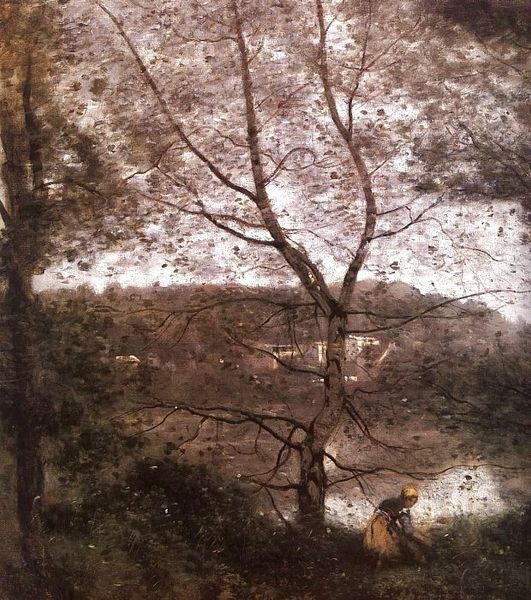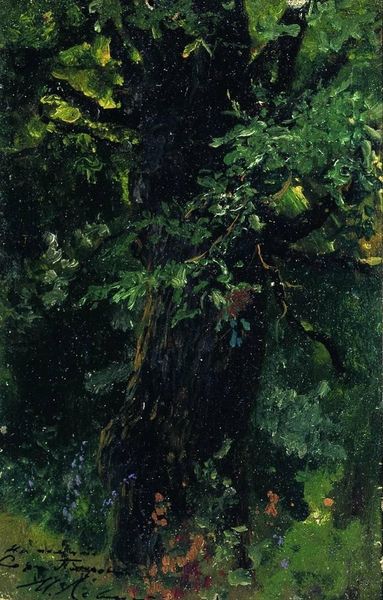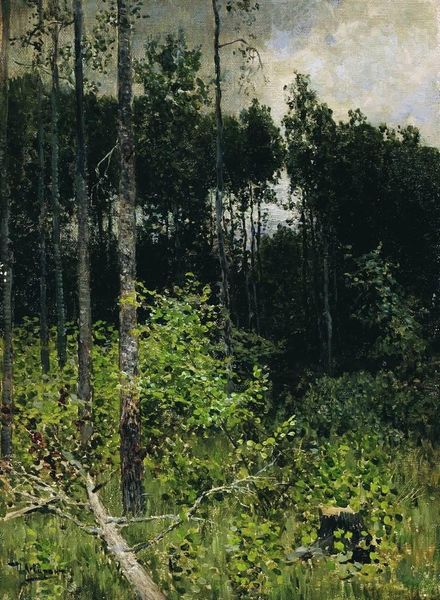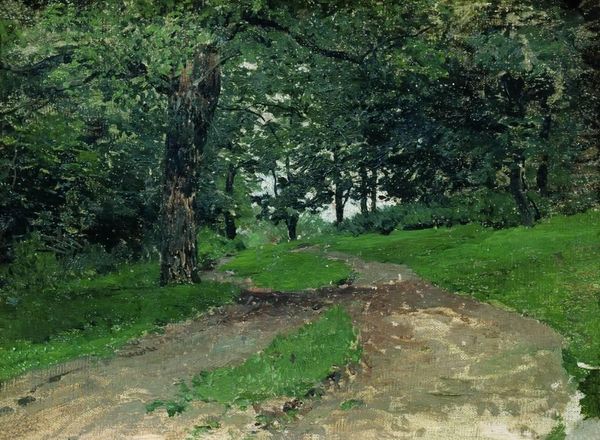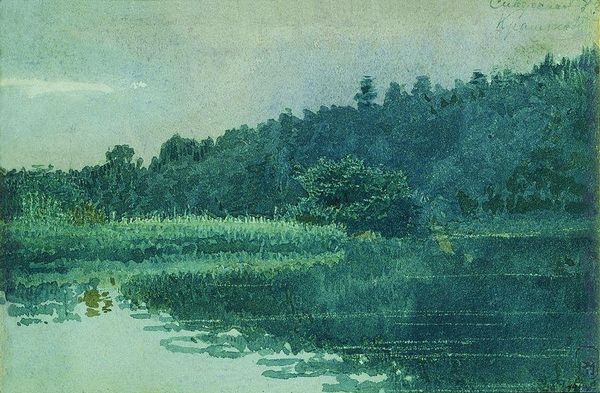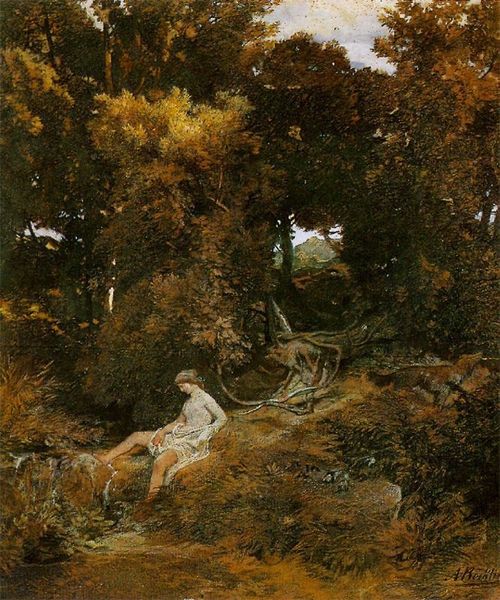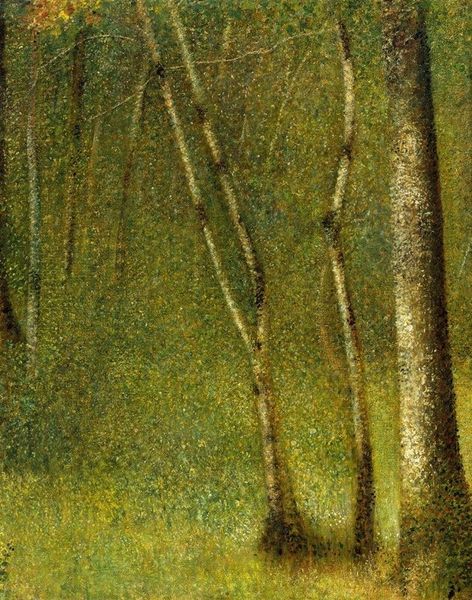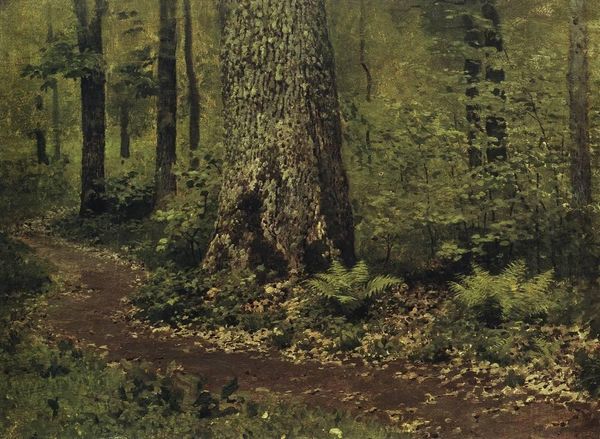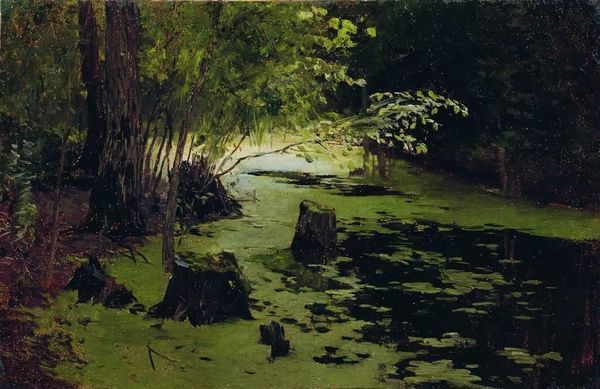
painting, plein-air, oil-paint, impasto
#
fairy-painting
#
painting
#
plein-air
#
oil-paint
#
landscape
#
oil painting
#
impasto
#
romanticism
#
realism
Copyright: Public domain
Editor: This is a painting titled "The Dead Knight" by Robert Bateman. It seems to be an oil painting done *en plein air*. It's rather somber; the colors are muted, and the landscape has a quiet melancholy to it. What strikes you about its visual construction? Curator: The success of this piece lies, paradoxically, in its understatement. Observe the tonal range. The artist employs a restrained palette, leaning heavily on greens and browns, creating a pervasive sense of unified atmosphere. Note how the texture achieved through impasto reinforces this effect. How do these choices work together? Editor: The brushstrokes and earth tones almost make the knight blend into the environment, a subtle shift to seeing the figure as part of a much larger scene. Do you see value in this decision? Curator: Precisely! It's crucial to notice the tension between realism and romanticism in Bateman’s piece. Do you see how the impasto technique adds depth to the field but reduces clarity? Editor: It becomes harder to discern clear shapes, but I can appreciate how the romantic technique evokes a particular mood, despite some of the loss of focus from a distance. Curator: Agreed. I believe we must approach this work recognizing the deliberate and masterful way that formal elements convey this mood. We begin with visual building blocks such as color, form, and texture. That in turn guides the creation of a cohesive, evocative representation, albeit one that invites subjective interpretation. Editor: Thank you! This painting presents interesting nuances when analyzing both form and tone. Curator: Indeed. Examining art through the formal elements provides the basis for richer consideration, especially if paired with social or other interpretive strategies.
Comments
No comments
Be the first to comment and join the conversation on the ultimate creative platform.
